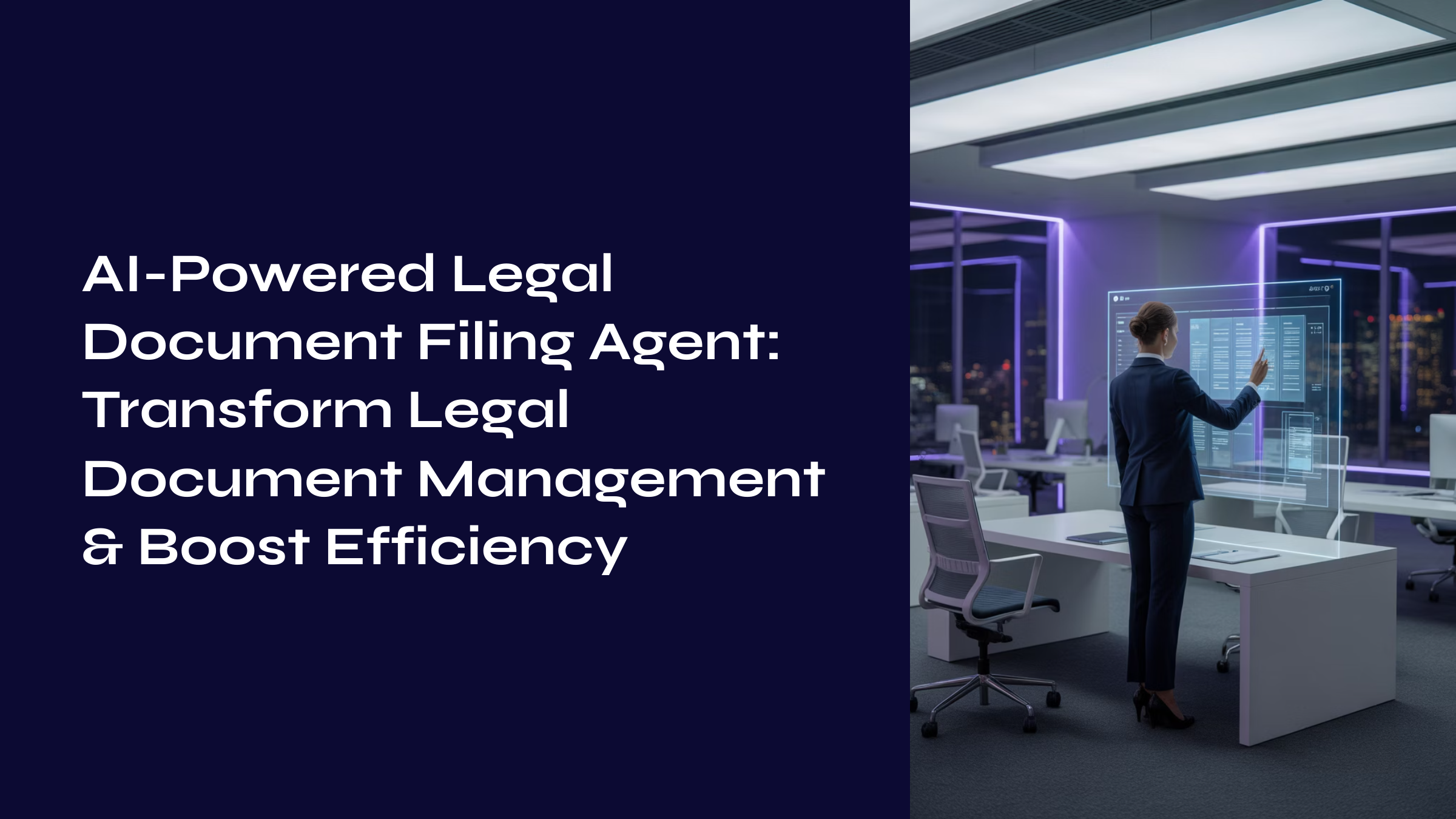Introduction
As customer service continues to evolve, businesses are increasingly turning to virtual agents for efficiency, scalability, and 24/7 availability. According to Gartner, by 2025, 80% of customer interactions will be handled by AI technologies, including virtual agents. Despite their growing adoption, virtual agents often fall short of expectations. In fact, Forrester reports that 54% of customers find virtual agents ineffective at resolving complex issues.
So, why do virtual agents fail, and how can businesses fix these shortcomings to truly enhance customer service? Let’s explore the most common reasons behind these failures and proven solutions to optimize virtual agent performance.
Common Reasons Virtual Agents May Fail and How to Fix Them
AI agents can fail in customer service for several reasons, often due to limitations in technology, improper implementation, or a mismatch between user expectations and the agent’s capabilities. Here are the key reasons why AI agents may fail in customer service.
1. Lack of Contextual Understanding
Virtual agents often lack the ability to grasp the full context of customer queries, especially when the input is phrased in ways they haven’t been trained to recognize. As a result, 45% of consumers express frustration when AI-powered chatbots misunderstand their needs (Zendesk).
Fix: Integrate advanced Natural Language Processing (NLP) with your virtual agents. Leveraging NLP allows AI to understand complex inputs, slang, and nuanced requests. Additionally, training the agent on diverse datasets and continuously updating it with customer interaction logs can improve its contextual understanding.
2. Difficulty Handling Complex Queries
While virtual agents excel at resolving simple, repetitive issues (like resetting passwords or checking account balances), they often struggle with more complex or multi-step queries that require a higher level of problem-solving.
Fix: Ensure seamless escalation to human agents when queries exceed the virtual agent’s capabilities. Clearly defining triggers for escalation—such as recognizing frustration in customer inputs or detecting unresolvable issues—will help ensure smooth hand-offs and a better customer experience.
3. Inconsistent Responses
Virtual agents can provide inconsistent responses if they are not regularly updated with new information or if they rely on outdated or incomplete knowledge bases. Inconsistencies confuse customers and erode their trust in the virtual agent’s abilities.
Fix: Regularly update your virtual agent’s knowledge base with the latest product information, customer service policies, and common queries. Utilizing machine learning models that continually refine responses based on real-time data and customer feedback can also minimize inconsistencies.
4. Poor Personalization
One-size-fits-all responses can feel robotic and impersonal, especially in industries where customers expect tailored solutions. Virtual agents that fail to recognize returning customers or adapt their answers based on the customer’s history can lead to disengagement.
Fix: Integrate customer relationship management (CRM) systems with your virtual agent, allowing it to access and use customer data for personalized interactions. By leveraging data from previous conversations, preferences, or purchase histories, virtual agents can provide more relevant responses and build stronger customer relationships.
4. Inability to Interpret Emotions
Virtual agents lack the emotional intelligence to gauge a customer’s frustration or satisfaction levels. Without this human touch, they might fail to address customer concerns appropriately, especially during critical or emotionally charged situations.
Fix: Implement sentiment analysis to help the virtual agent detect emotional cues from customer language. When high levels of frustration or dissatisfaction are detected, the virtual agent can immediately escalate the case to a human agent for more empathetic handling.
5. Over-Automation
Some businesses attempt to automate too many aspects of customer service with virtual agents, leading to a robotic experience. Customers seeking personalized assistance or complex solutions often feel alienated when only interacting with an automated agent.
Fix: Use a hybrid approach that combines virtual agents for handling routine tasks and human agents for more complex or high-value interactions. Strike the right balance between automation and human touch to meet different customer needs effectively.
5. Failure to Learn and Adapt
Many virtual agents fail because they do not learn from their past mistakes or improve their responses based on feedback. If your AI agent continues to make the same errors, customers may lose patience and abandon the interaction.
Fix: Implement machine learning algorithms that enable continuous learning. Feedback loops should be built into your system, so virtual agents can learn from every customer interaction. This helps improve responses over time and increases the agent’s effectiveness.
6. Security and Data Privacy Concerns
Customers may hesitate to share sensitive information with virtual agents, especially in industries like finance or healthcare, due to concerns over data privacy and security. If customers feel unsafe using virtual agents, their adoption rates will drop.
Fix: Ensure your virtual agents comply with industry-specific security regulations (such as GDPR or HIPAA). Clearly communicate data privacy policies to customers, highlighting the security measures in place to protect their information. Building trust around data handling is essential for ensuring adoption.
How to Maximize Virtual Agent Success
To avoid these pitfalls, businesses must not only invest in technology but also in strategic planning to optimize their virtual agents. Here are five essential steps:
- Leverage Advanced AI and Machine Learning
Equip your virtual agents with robust AI, including advanced Natural Language Understanding (NLU) and machine learning capabilities. Continuous learning enables virtual agents to refine their understanding of customer queries, reducing error rates and enhancing customer satisfaction. Gartner reports that by enhancing AI with machine learning, businesses can improve customer interaction outcomes by 30%. - Maintain an Up-to-Date Knowledge Base
A virtual agent is only as good as the information it has. By keeping your knowledge base current, your AI can provide accurate, timely responses. This alone can boost customer satisfaction by 24%, according to a Zendesk report. - Prioritize Human-AI Collaboration
The hybrid approach of using both AI and human agents can lead to higher customer satisfaction. In fact, a PwC study found that 82% of U.S. consumers want more human interaction in customer service, even with AI support. - Analyze Performance Metrics
Regularly review metrics like customer satisfaction (CSAT), first contact resolution (FCR), and time-to-resolution to measure the success of your virtual agents. These insights allow you to make data-driven improvements. . - Focus on User Experience
Design your virtual agents to provide a seamless, user-friendly experience. The better the experience, the more likely customers are to engage and remain loyal. A Harvard Business Review study showed that improving customer experience with AI can increase loyalty by up to 33%.
Conclusion: Transforming Your Customer Service with Virtual Agents
Virtual agents have the potential to revolutionize customer service by providing efficiency and cost-effectiveness. However, without continuous learning, proper contextual understanding, and personalization, they may fail to meet customer expectations. By addressing the key reasons for failure—such as inconsistent responses, inability to handle complex queries, and poor emotional intelligence—you can transform your virtual agents into a powerful tool that drives both satisfaction and efficiency.
We specialize in deploying AI-driven virtual agents that utilize advanced technologies, including machine learning, natural language processing (NLP), and seamless integration with human agents. Our solutions are designed to help businesses optimize customer service interactions, boost satisfaction rates, and ensure long-term success. Contact us today to learn more about how our virtual agents can enhance your customer service strategy.
Frequently Asked Questions (FAQs)
- What are virtual agents?
Virtual agents are AI tools that assist customers by answering inquiries and resolving issues through text or voice interactions. - What are the benefits of virtual agents?
They provide 24/7 support, reduce response times, save costs, and improve customer satisfaction by delivering quick, accurate answers. - How can I ensure my virtual agents perform well?
Invest in continuous learning, provide relevant information, and integrate them with human agents for complex queries. - What challenges do virtual agents face?
They often struggle with complex inquiries, understanding emotions, and maintaining consistent responses. - How can I measure the success of virtual agents?
Track metrics like customer satisfaction scores, resolution rates, and response times to evaluate their effectiveness.
Explore more about our Generative AI Solutions
















